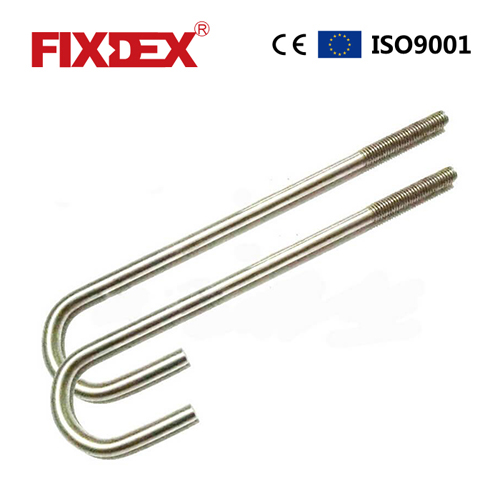We received some terrific comments and experiences on the last Lander Lab Underwater Releases.
Patrick Lahey, Triton Submarines (Sebastian, Florida), spoke of their use of Frangibolts for an emergency drop weight release in their hadal class submersible Triton 38000/2 (s/n 001 named DSV Limiting Factor). The EBAD Frangibolt® Actuator is a simple and effective way to support and release loads up to 20,000 lb. Actuation occurs when power is applied to a Shape Memory Alloy (SMA) cylinder until it reaches its transition temperature. As the SMA cylinder heats up, it expands to its elongated length, producing strain on a bolt or stud until fracture occurs at a predetermined notch, achieving separation of the anchor, manipulator, or other load from the submersible. The cold temperatures of deep water are not enough to affect the operation of the Frangibolt. Standard Fastener sizes range from #8 to ¾" bolts." Threaded Bar

Galvanic (bimetallic) releases are better used to release a recovery buoy rather than to drop the anchor weight and free a lander. Even with 1% accuracy, at 7 days the time variability is +/- 1.7 hours, or a total time window of 3.4 hours. Time the release to have the buoy on the surface before dawn during the week when the winds are light and boat traffic in the area is minimal. A high strength, low stretch, non-hockling, buoyant line, such as Samson’s Amsteel-Blue Dyneema AS-78 single braid is preferred. The AS-78 1/8” diameter has a 2,500-lb breaking strength. At 20% breaking strength (500-lb load), the stretch is 0.7%. A battery powered capstan will be a big help to the deck crew if line lengths measure 100’s of meters. Net weight of the buoyant lander with a negative anchor weight should be around 40-lbs, so a lightweight capstan will suffice. The capstan should be mounted rigidly to the boat frame to allow for dynamic loading with roll, pitch and heave.
Kevin, please remind your readers that EdgeTech is expanding their code structure to offer additional unique codes for their acoustic releases. The change increases the number of possible commands from 12,000 to 131,000 per tone pair for a total possible 786,000 commands. All new low frequency (LF) releases purchased after September 2022 will have the expanded new codes. If your group uses an existing EdgeTech deck unit that is less than 10 years old and wishes to use that deck unit with your existing releases and the new releases please contact Rob so he can arrange to upgrade your deck box. If you are unsure of the age of your deck box you can send Rob the serial number and he will check the age of it. Deck units sold as of December 2021 will have the new expanded code structure. New deck units can be used with existing acoustic release units and the factory-new releases.
Bart writes: “Take a look at the EvoLogic S2C Acoustic Release Device. It says they are hydraulic, but it’ll be interesting to take a closer look at how they work. Based on the specs they are roughly compatible with the output of the AR60 link voltage and current.” https://evologics.de/components/acoustic-release (Kevin: “Thanks, Bart, we’ll take a look and discuss.”)
Scripps Institution’s Frank Snodgrass, Chief Engineer for Walter Munk in the 1960’s and early 1970’s, always believed in dual release systems, a primary and a back-up, but also believed in using two different release types, such as a solenoid on one side and an exploding bolt on the other. His reasoning: if the same release type is used for both primary and back-up, and a mistake is made arming one, the same mistake might be made arming the other. Detailed checklists help reduce that possibility, but something to consider in system design.
Other release devices I missed mentioning are explosive bolts, pyrotechnic cutters, and pyrotechnic pin pullers. In my early days at Scripps we used exploding bolts down to 5km. These devices are generally expensive and somewhat hard to ship, especially by air. (Class-1 Explosive, Division 1.4) They do work in fresh water. Pre-launch testing options are able to confirm integrity. Exploding bolts. Exploding bolts mechanically secure two objects together, then fail on command at a weak band, with a minimum of loose debris, releasing the anchor or other object. Some bolts are designed specifically for marine critical applications where rapid structure separation is required. In-line tensile strengths from 200-lbs to 1,000,000-lbs are available.
Pyrotechnic cutters, courtesy PacSci EMC. A Pyrotechnic Cutter uses a gas generating charge and a cutting blade to sever objects. When initiated, the cutter will sever a multitude of materials and cross-sectional shapes including electrical or fiber optic cables, steel wire rope, bolts, tubes and woven or braided fiber cords, lines and straps. A Pyrotechnic Pin Puller is used to toggle latch releases, pull locking pins or move mechanisms to perform work. For more information, go to the PacSci EMC.
Ifremer, Jean-Louis Etienne and the entire Polar POD team announced its construction by the Piriou shipyards in association with 3C Metal…
Armach Robotics said on Tuesday that it had reached a major milestone by operating its hull cleaning robot successfully in…
Kraken Robotics said its AquaPix Miniature Synthetic Aperture Sonar (MINSAS) System has been selected as the standard payload…
UK-based uncrewed surface vessel (USV) specialist SEA-KIT on Thursday announced its first USV export sale to ThayerMahan…
With a background in subsea and offshore, coming up with new ideas is the norm for UK-based engineering consultancy STL (Submarine…
Canada-based marine technology firm Kraken Robotics has appointed Bernard Mills to its board of directors, effective December 1, 2022. "Mr.
Marine Technology Reporter is the world's largest audited subsea industry publication serving the offshore energy, subsea defense and scientific communities.

Drop In Wedge Anchor Marine Technology ENews is the subsea industry's largest circulation and most authoritative ENews Service, delivered to your Email three times per week